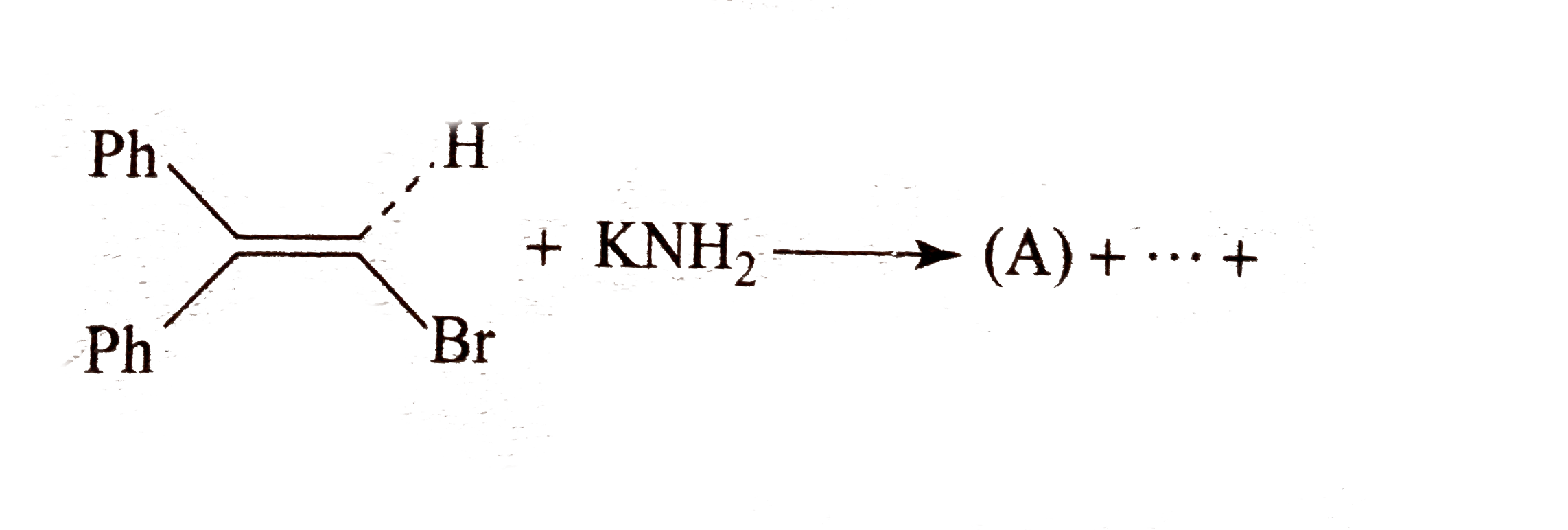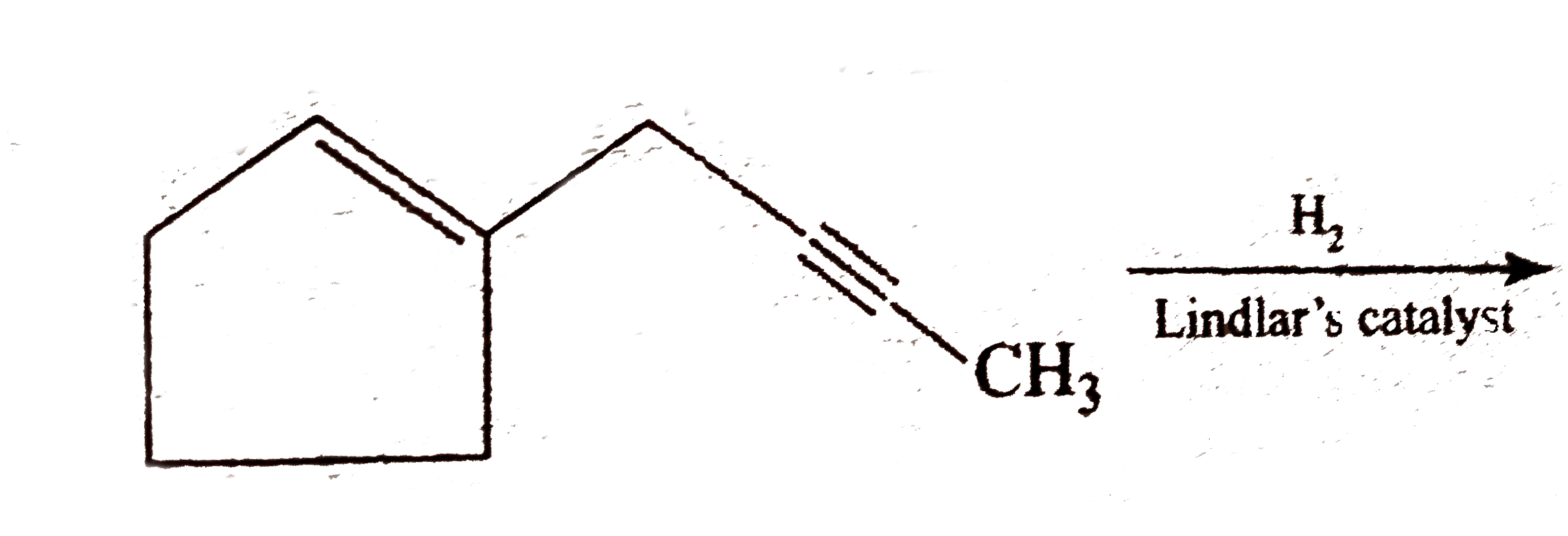Complete Solutions to SUBJECTIVE TYPE of chapter ALKENES AND ALKADIENES of Class 11 book with complete answers and questions
| Class 11 | CHEMISTRY |
| Chapter | ALKENES AND ALKADIENES |
| CENGAGE CHEMISTRY | SUBJECTIVE TYPE |
| Number Of Questions | 18 |
| Academic Year | 2023-24 |
Write the structural formula of the major product in the following case.
Ethene mixed with air is passed under pressure over a silver catalyst at `250^(@)C`.
View SolutionOne mole of a hydrocarbon `'A'` reacts with `1 mil` of brominne giving a dibromo compound, `C_(5)H_(10)Br_(2)`. Compound `'A'` on treatment with cold dilute alkaline potassium permanganate solution forms a compound, `C_(5)H_(12)O_(2)`. On ozonolysis, `'A'` gives equimolar quantities of propanone and ethanal. Deduce the structural formula of `'A'`
View SolutionState with balanced equation, what happenes when “propene is bubbled through a hot aqueous solution of potassium permanganate.” ?
View SolutionGive reasons for the following in one or two sentences`:`
`i.` Methane does not react with chlorine in dark.
View SolutionThe following statement is true only under some specific conditions. Write the condition for questions in not more than two sentences.
`2-`Methyl propene can be converted into isobutyle bromide by hydrogen bromide.
View SolutionA white precipitate was formed slowly when silver nitrate was added to compound `(A)` with molecular formula `C_(6)H_(13)Cl`.Compound `(A)` on treatment with hot alcoholic potassium hydroxide gave a misture of two isomeric alkenes `(B)` and `(C)`, havinig the formuls `C_(6)H_(12)`. The mixture of `(B)` and `(C)`, on ozonolsis, furnished four compounds.
i. `CH_(3)CHO`,ii `C_(2)H_(5)CHO`
iii. `CH_(3)COCH_(3)`,(iv) `CH_(3)-underset(CH_(3))underset(|)(CH)-CHO`
What are the structures of (A),(B)and (C) ?
View SolutionGive a chemical test and the reagents used to distinguish between cyclohexane and cyclohexene.
View SolutionWrite the chemical equation for the following : ' Ethylene glycol is obtained by the reaction of ethylene with potassium permanganate .
View SolutionGive the structures of `(A),(B)` and `(C)(`explanation is not required `).`
`i.` `(A)(C_(4)H_(8))` that adds on `HBr` in the presence and in the absence of peroxide to give the same product, `C_(4)H_(9)Br`.
`ii.` `(B)(C_(4)H_(8)),` which when treated with `H_(2)O //H_(2)SO_(4)` gives `C_(4)H_(10)O` that cannot be resolves into optical isomers.
`iii.` `(C)(C_(6)H_(12),` an optically active hydrocarbon which on catalytic hydrogenation gives an optically inactive compound, `C_(6)H_(14))`
View SolutionWhen gas `A` is passed through dry `KOH` at low temperature, a deep red coloured compound, `B` and a gas care obtained. The gas `A`, on reaction with but-2-ene, followed by treatment with `Zn//H_2 O` yields acetaldehyde. Identify `A, B` and `C`.
View SolutionAn organic compound `E (C_5 H_8)` on hydrogenation gives compound` F (C_5 H_(12) )`. Compound E on ozonolysis gives formaldehyde and 2-ketopropanal. Deduce the structure of compound E.
View SolutionGive the structure of the major organic products obtained from `3-`ethyl`-2-`pentene under each of the following reaction conditions.
`a.` `HBr` in the presence of peroxide
`b.` `Br_(2)//H_(2)O`
`c.` `Hg(Oac)_(2)//H_(2)O,NaBH_(4)`
View SolutionAn alkyl halide `(X)`of the folmula `C_(6)H_(13)Cl` on treatment with potassium tertiary butoxide gives two isomeric alkenes `(Y)` and `(Z)(C_(6)H_(12))`. Both the alkenes on hydrogenation give `2,3-`dimethyl butane. Perdict the structures of `(X),(Y)` , and `(Z)`
View SolutionComplete the foloowing giving the structurs of the principal organic product.

View SolutionGive reasons for the following in one or two sentences `'` The central carbon`-` carbon bond in `1,3-`butadiene is shorter than that in `n-` butane `'`.
View SolutionWhat would be the major product in the following reaction ?

View SolutionMonomer `(A)` of a polymer on ozonolysis yields `2 mil HCHO`and `1 mol CH_(3)COCHO`.
`a.` Deduce the structure of `(A)`.
`b.` Write the structure of `'` all `cis'` foms of polymer of compound `(A)`.
View SolutionWhat is the total number of structural isomers possible for a compound with the molecular formula `C_(5)H_(10)` ?
View Solution
SUBJECTIVE TYPE questions and complete solutions for chapter ALKENES AND ALKADIENES of CENGAGE CHEMISTRY (ENGLISH) of Class 11